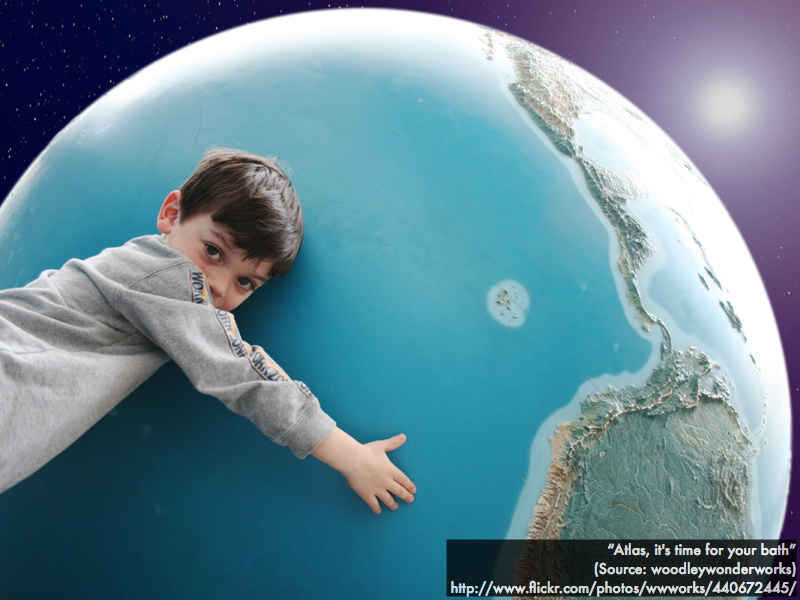Cuesta College, San Luis Obispo, CA
Students have a weekly online reading assignment (hosted by SurveyMonkey.com), where they answer questions based on reading their textbook, material covered in previous lectures, opinion questions, and/or asking (anonymous) questions or making (anonymous) comments. Full credit is given for completing the online reading assignment before next week's lecture, regardless if whether their answers are correct/incorrect. Selected results/questions/comments are addressed by the instructor at the start of the following lecture.
The following questions were asked on reading textbook chapters and previewing presentations on quantum leaps, and the sun's outer layers.

Selected/edited responses are given below.
Describe something you found interesting from the assigned textbook reading or presentation preview, and explain why this was personally interesting for you.
"That sunspots are magnetic."
"The miso soup portion because I enjoy it and had it Friday before reading the presentation and thought it would be a good astronomy connection."
"Comparing the sun to the wings and fire-spitting cobras was cool. I never knew that was a thing. The Egyptians had amazing imaginations! However, I do see why they related the two! Too cool :)"
"The sun's corona; that it was named after the Greek word for 'crown.' It's neat that even though you can't see it during the daytime, you can see parts of it during a total solar eclipse."
"The chemistry is interesting to me. I am also taking chemistry this semester, so it's interesting to see the chemistry behind astronomy."
Describe something you found confusing from the assigned textbook reading or presentation preview, and explain why this was personally confusing for you.
"I sort of found the way they explained electrons, absorption, and other things they explained about atoms, as I have always heard it described somewhat differently."
"I found the two rules, photon and electron rules, somewhat confusing. Can't really explain why it was confusing, it just was."
"Understanding the different energy levels of an electron is a little bit confusing. How exactly do you move an electron from a low energy to a high energy level?"
"It is easy to mix up how electrons move between orbitals."I'm not really confused on anything yet. I do believe I may have a question once we are in class and talking about everything though. Other students usually help spark questions in my head ;)"
An electron in an atom must emit a photon when it jumps from a __________ energy orbital to a __________ energy orbital.
lower; higher. ** [2] higher; lower. ****************** [18] (Both of the above choices.) [0] (Unsure/guessing/lost/help!) [0]
An electron in an atom must absorb a photon when it jumps from a __________ energy orbital to a __________ energy orbital.
lower; higher. ******************* [19] higher; lower. * [1] (Both of the above choices.) [0] (Unsure/guessing/lost/help!) [0]
The exterior of the sun, from inner to outermost layers, are the:
(Only correct responses shown.)
inner: photosphere [85%]
middle: chromosphere [85%]
outer: corona [80%]
State your preference regarding miso soup.
Strongly dislike. [0] Dislike. **** [4] Neutral. **** [4] Like *** [3] Strongly like. **** [4] (I don't know what miso soup is.) ***** [5]
Ask the instructor an anonymous question, or make a comment. Selected questions/comments may be discussed in class.
"With regards to the blueshift and redshift Doppler effect for light, it is kind of like a car's lights. Blue-ish headlights coming at you (the distance between you and the car is growing shorter), vs the red taillights when it's driving away from you (distance is growing longer) :) That's an easy way to remember it for me!"
"Miso soup?"
"Please tell us what miso soup is ;)"
"I like the smell of miso soup, just haven't become a huge fan of the taste of it yet. Plus I am not a huge fan of tofu."
"Thanks for reminding us that the sun is not literally a bowl of miso soup, for a second there I started thinking it was."
"It feels like we are way ahead in class--can we slow down? It's a little weird taking a quiz on things we went over a few weeks ago, and then learning something completely different after the quiz." (We will definitely slow down after today to review for the upcoming midterm, and then review for the quiz after that. We just needed to go over stuff first before we can review it later.)
"When will we get a chance to see the telescopes?" (Next scheduled date is late March, if it stops raining long enough that the swampy path out to the telescope shelter will dry out.)
"So looking at all the eclipses on timeanddate.com, is that all the different eclipses we will ever see from Paso Robles in the next three years? Or could more be discovered?" (Since eclipses can be predicted accurately, then that's all the eclipses that will occur within the next three years.)
"Will this question be shown in class?" (Yes.)
"I love your teaching methods and patience with everyone as a whole, you're a great teacher, very interesting, relatable, and let us understand with light effort."






















